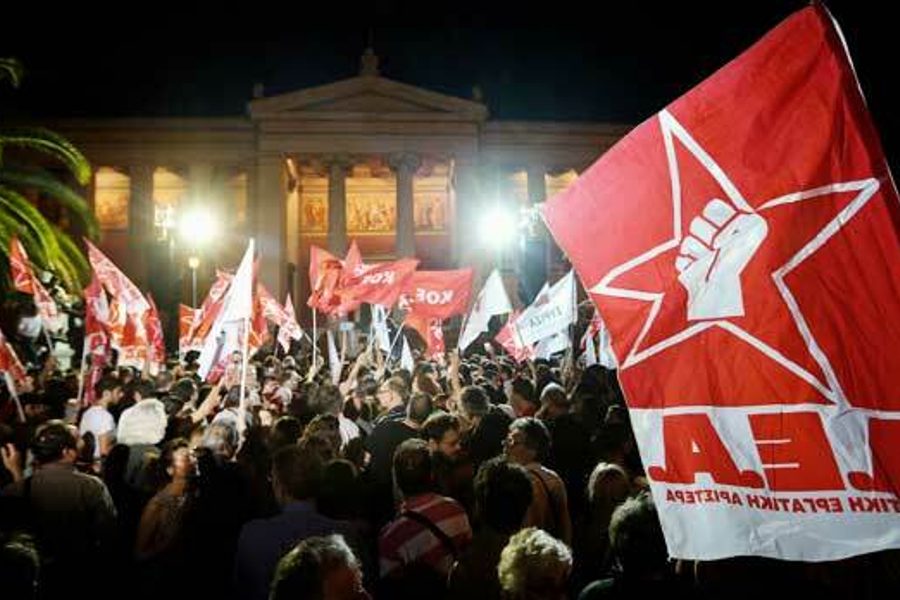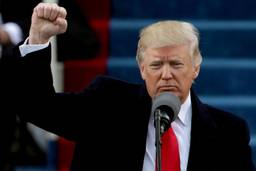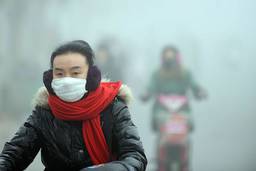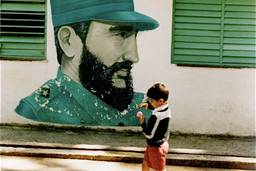
When an authoritarian regime approaches its final crisis, as a rule its dissolution follows two steps. Before its collapse, a mysterious rupture takes place. All of a sudden people know that the game is over, and then they are no longer afraid. It is not only that the regime loses its legitimacy, but that its own exercise of power is perceived as an impotent panic reaction. We all know the classic scene from cartoons. The cat reaches a precipice, but continues walking, unaware that there is no ground under its feet. It falls only when it looks down and notices the abyss. When a regime loses its authority, it is like a cat above the precipice: In order to fall, it only has to be reminded to look down.
In Shah of Shahs, a classic account of the Khomeini revolution, Ryszard Kapuscinski located the precise moment of this rupture. At a Tehran crossroad, a single demonstrator refused to budge when a policeman shouted at him to move, and the embarrassed policeman simply withdrew. Within a couple of hours, all of Tehran knew about this incident. Although street fights continued for weeks, everyone knew the Shah was finished. Is something similar going on now?
There are many versions of the recent events in Tehran. Some observers view the protests as the culmination of the pro-Western “reform movement” along the lines of the “orange” revolution in Ukraine – a secular reaction to the Khomeini revolution. They support the protests as the first step toward a new liberal, democratic, secular Iran freed of Muslim fundamentalism.
But some skeptics think that Mahmoud Ahmadinejad really won, making him the voice of the majority, while the support of Mir-Hossein Mousavi comes from the middle class (who are the minority) and its gilded youth. In other words, let’s drop the illusions and face the fact that, in Ahmadinejad, Iran has a president it deserves.
Then there are others who dismiss Mousavi as a member of the cleric establishment with merely cosmetic differences from Ahmadinejad. Mousavi wants to continue the atomic energy program, and he is against recognizing Israel. Plus he enjoyed Khomeini’s full support as a prime minister during the 1980s war with Iraq.
Leftists out of the loop
The saddest of all are the Leftist supporters of Ahmadinejad. According to them, Ahmadinejad won because he stood up for the country’s independence, exposed elite corruption and used oil wealth to boost the incomes of the poor majority. This is, so we are told, the true Ahmadinejad behind the Western media image of a Holocaust-denying fanatic. Further, what is going on now in Iran is a repetition of the 1953 overthrow of Mohammad Mossadegh – another Anglo-American-instigated coup against a legitimate president. This view ignores factual reality along with the high electoral participation (up from the usual 55 percent to 85 percent), which can only be explained as a protest vote. It also displays an inability to understand the demonstrations as a genuine expression of popular will, and it patronizingly assumes that for backward Iranians, Ahmadinejad is good enough. They are not yet sufficiently mature to be ruled by a secular Left.
Conflicting as they are, all these versions read the Iranian protests along the axis of Islamic hardliners versus pro-Western liberal reformists, which is why they find it so difficult to understand Mousavi. Is he a Western-backed reformer who wants more personal freedom and a market economy, or a member of the cleric establishment whose victory would not affect the nature of the regime in any serious way? Such oscillations demonstrate that all interpretations miss the true nature of the protests.
The green tide
The green color adopted by the Mousavi supporters and the cries of “Allah akbar!” that resonate from the roofs of Tehran in the evening darkness show that protesters see this as the repetition of the 1979 Khomeini revolution, undoing the revolution’s corruption and returning to its roots. It is not only programmatic; it concerns even more the crowds’ modes of activity: the emphatic unity of the people, creative self-organization, and improvisational articulation of protest. It is a unique mixture of spontaneity and discipline: the ominous march of thousands in complete silence. It is a genuine popular uprising of the deceived partisans of the Khomeini revolution.
There are several crucial conclusions to be drawn from this insight. First, Ahmadinejad is not the hero of the Islamist poor, but a genuine, corrupted, Islamo-Fascist populist-an Iranian version of Italian President Silvio Berlusconi. Ahmadinejad’s mixture of clownish posturing and ruthless power politics causes unease even among the majority of ayatollahs. His demagogic distribution of crumbs to the poor should not deceive us. Organs of police repression, a Westernized PR apparatus and a strong nouveau-riche class – the result of the regime’s corruption – stand behind him. In fact, Iran’s Revolutionary Guard is not a working-class militia, but a mega-corporation, the strongest concentration of wealth in the country.
There is a clear distinction between Mehdi Karroubi and Mousavi, the two main candidates opposed to Ahmadinejad. Karroubi is a reformist, proposing the Iranian version of identity politics and promising favors to all particular groups. Mousavi is something entirely different. His name stands for the genuine resuscitation of the popular dream that sustained the Khomeini revolution. Even if this dream was a utopia, it’s important to recognize in it the genuine utopia of the revolution itself. The 1979 Khomeini revolution cannot be reduced to just hard-line Islamist takeover – it was much more.
After the revolution
Now is the time to remember the incredible effervescence of the first year after the revolution, with the breathtaking explosion of political and social creativity, organizational experiments and debates among students and ordinary people. The fact that this explosion was stifled demonstrates that the Khomeini revolution was an authentic political event – a momentary opening that unleashed new forces of social transformation, a moment in which “everything seemed possible.” What followed was a gradual takeover of political control by the Islam establishment. In Freudian terms, today’s protest movement is the “return of the repressed” of the Khomeini revolution.
Last but not least, the demonstrations show that Islam has a genuine liberating potential to find a “good” Islam. One doesn’t have to go back to the caliphs of the 10th centurywe have it right here.
The future is uncertain. In all probability, Ahmadinejad et al. will contain the popular explosion, and the cat will not fall into the precipice, but regain its foothold. However, it will no longer be the same regime, rather just one example of corrupted authoritarian rule.
Whatever the outcome, we are witnessing a great emancipatory event that doesn’t fit the frame of the struggle between pro-Western liberals and anti-Western fundamentalists. If today’s cynical pragmatism inhibits our capacity to recognize this emancipation, then the West is entering a post-democratic era, getting ready for its own Ahmadinejads. Italians already know his name: Berlusconi. Others are waiting in line.








